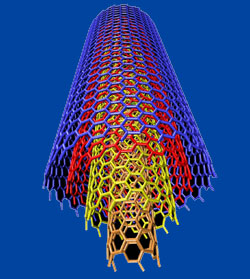Batteries - which are able to store energy through chemical separation - are better at transferring large amounts of energy, while capacitors - which are able to store energy by separating electrical charges - are better at transferring large amounts of power (energy per unit of time). The best system would, of course, be the combination of these two characteristics

In the field of energy storage, various factors may be significant, such as energy density/power, depending on the circumstances. Batteries - which are able to store energy through chemical separation - are better at transferring large amounts of energy, while capacitors - which are able to store energy by separating electrical charges - are better at transferring large amounts of power (energy per unit of time). The best system would, of course, be the combination of these two characteristics.
Scientist Michael Strano and his colleagues from MIT University report on the findings of their research regarding energy storage in thin carbon nanotubes by adding fuel along the length of the tube, fuel that is chemical energy that can then be converted into electricity by heating one end of the tube. This thermo-energetic process works as follows: the heating initiates a chain reaction and a "wave" of energy conversions spreads along the nanotube at a speed of 10 meters per second.
"Carbon nanotubes continue to reveal new facts to us - the discovery of thermoenergetic waves opens a window to new possibilities in the field of energy generation and the physics of active waves," explains the lead researcher. A standard lithium battery has an energy density of 1 kW/kg. Although the researchers have not yet reached commercial production of their nanotubes, they have already achieved charge discharge pulses with an energy density of 7 kW/kg.
In addition, the researchers published new findings regarding experiments that utilize carbon nano-nozzles of an unprecedented size - 1.7 nanometers in diameter and 500 microns long.
"Carbon nano-nozzles," notes the researcher, "allow us to identify individual frogs and count them one by one," a system that was able to do this for the first time ever. And this happens at room temperature.
The individual particles being tested cross the nanotubes one by one in a process known as "coherence resonance". "This phenomenon has not been seen so far for any inorganic system," notes the researcher, "however, it is a good imitation of active biological ion channels, known in the literature."

6 תגובות
Does it make it possible to produce a car battery? And if so, how long will it take to develop such a battery. And of course the question arises as to the lifetime of such a battery, and its price.
post Scriptum. I understood that it would give seven times the driving distance
The question is, is it economical? What would be the price of such a battery that would be suitable for driving an electric vehicle?
Is there anything they can't do? those pipes?
Every day something new
I'm waiting for the first gadget that I can say - here are pipes and I'm holding them.
Wait, so in very simple terms does this mean that batteries will be able to last much longer?
Another advantage is that we can produce batteries from materials that are not under the exclusive control of China as is the case today.
Sounds promising even though I didn't understand much!